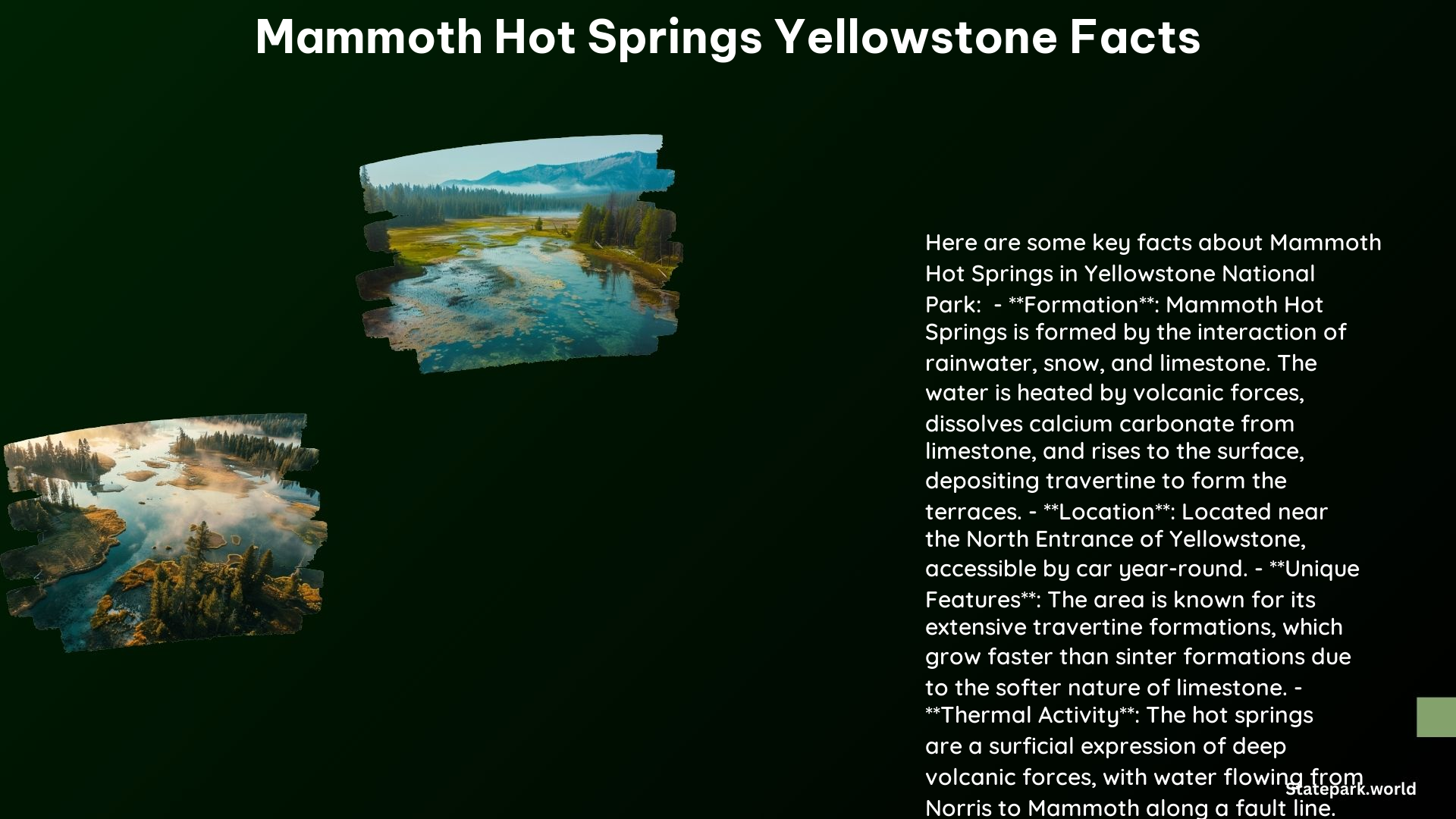Mammoth Hot Springs in Yellowstone National Park is a unique and fascinating geological feature formed by the interaction of hot water, limestone, and carbon dioxide. This article explores the fascinating facts about Mammoth Hot Springs, providing valuable insights for national park touring enthusiasts.
Formation of Mammoth Hot Springs
Mammoth Hot Springs is formed through a complex process involving the interaction of hot water, limestone, and carbon dioxide. Rain and snowmelt from the surrounding mountains seep into the ground, where they are heated by volcanic forces. As the water rises, it dissolves limestone and becomes saturated with calcium carbonate. When the water reaches the surface, the carbon dioxide escapes, causing the calcium carbonate to precipitate out as travertine, a crystalline limestone.
Travertine Terraces

The travertine formations at Mammoth Hot Springs grow rapidly due to the soft nature of limestone. This process creates extensive terraces that are unlike other thermal areas in the park, which typically form sinter (silica or geyserite). The ever-changing nature of the springs, with some appearing to “die” and then reactivating, is due to the natural “plumbing” system of fractures and fissures that allow hot water to reach the surface.
Thermal Activity and Heat Source
The hot springs at Mammoth are a result of deep volcanic forces, with the magma chamber beneath the Yellowstone Caldera being a possible heat source. The water flows from Norris to Mammoth along a fault line, cooling from around 200°F to 170°F before surfacing.
Accessibility and Hiking Trails
Mammoth Hot Springs is accessible by car year-round, with boardwalk trails covering about 1.75 miles around the Upper and Lower Terraces. The area is suitable for a moderate, 1-hour hike with about 300 feet of elevation gain. Visitors can also explore more strenuous trails, such as the one from the Lower to Upper Terraces, which includes steep boardwalks and several hundred stairs.
Historical Significance
The Mammoth area has been thermally active for thousands of years, with evidence of glacial activity from the Pinedale Glaciation. The area has also been home to historic events, including the Nez Perce flight in 1877 and President Teddy Roosevelt’s visit in 1903. The Mammoth area is also home to historic Fort Yellowstone, built by the US Army from 1891 to 1913, with many of the original buildings still standing and used by the National Park Service as park headquarters.
Wildlife and Visitor Center
The Mammoth Hot Springs area is home to a variety of wildlife, including bighorn sheep, elk, and bison. Visitors can also spot eagles, osprey, dippers, and kingfishers along the river. The area also features a Visitor Center, providing information and resources for visitors.
In conclusion, Mammoth Hot Springs in Yellowstone National Park is a unique and fascinating geological feature that offers a wealth of information and experiences for national park touring enthusiasts. From its complex formation to its historical significance and diverse wildlife, Mammoth Hot Springs is a must-visit destination for anyone exploring the wonders of Yellowstone National Park.
References:
- National Park Service. (2024). Mammoth Hot Springs and the North. Retrieved from https://www.nps.gov/yell/planyourvisit/explore-mammoth.htm
- University of Montana. (n.d.). Mammoth Hot Springs. Retrieved from https://www.umt.edu/this-is-montana/photos/stories/mammoth-hot-springs.php
- National Park Service. (2024). Mammoth Hot Springs Trails. Retrieved from https://www.nps.gov/thingstodo/yell-mammoth-hot-springs-trails.htm
- Yellowstone.net. (n.d.). Mammoth Hot Springs. Retrieved from https://yellowstone.net/intro/mammoth-hot-springs/
- Yellowstone Park. (2022). Yellowstone’s Mammoth Hot Springs Looks Like an Inside-Out Cave. Retrieved from https://www.yellowstonepark.com/things-to-do/geysers-hot-springs/mammoth-hots-springs-inside-cave/.
